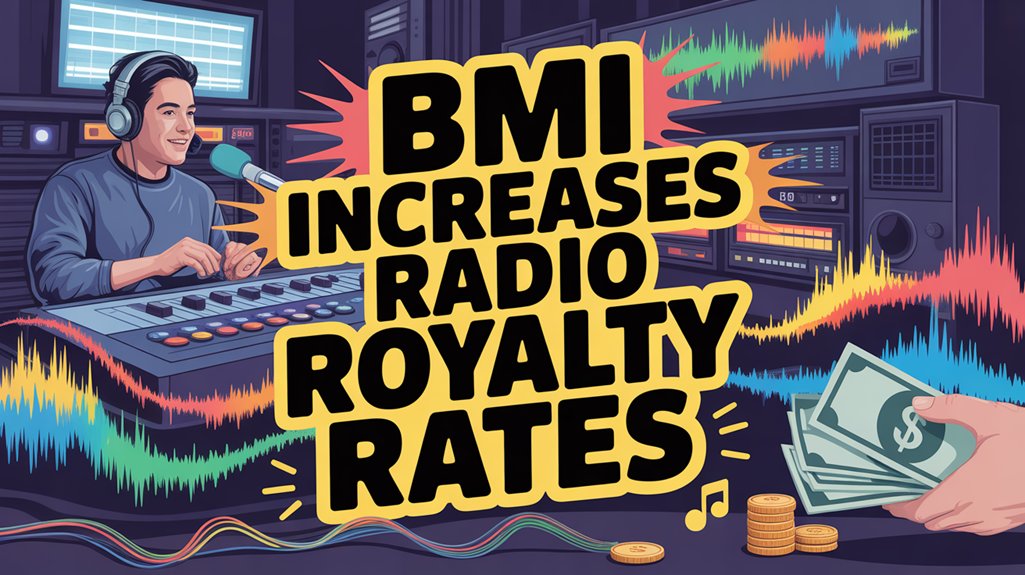In a landmark decision set to reshape the economics of terrestrial radio, BMI has secured the largest royalty rate increase in its history through a settlement with U.S. broadcasters that will govern licensing from 2022 through 2029. The agreement, which ended a prolonged rate court battle, increases royalties from the previous 1.78% of gross revenue to 2.14% for 2022-2023, eventually rising to 2.20% by the 2026-2029 period—representing an unprecedented 24% overall increase compared to the prior agreement.
The settlement affects nearly 10,000 commercial radio stations across the United States, all of which must now adjust their financial projections to accommodate the higher fees. The agreement contains digital revenue discounts that reduce the impact on newer income streams. Payments are calculated through blanket licensing arrangements rather than per-song fees, with broadcasters required to pay the specified percentage of their gross revenue for the right to play BMI-represented music.
Importantly, the agreement applies retroactively from January 1, 2022, meaning stations must account for back payments covering performances since that date.
Radio stations face retroactive obligations, requiring payment adjustments to cover music played since early 2022.
“This historic rate increase reflects BMI’s superior market share in the radio industry,” noted BMI President Mike O’Neill, who emphasized the importance of sustaining songwriter royalty streams in the terrestrial radio landscape.
Meanwhile, RMLC Chairman Ed Atsinger highlighted the certainty the agreement provides, allowing broadcasters to engage in long-term financial planning despite the increased costs.
Approximately 85% of all collected royalties will flow directly to songwriters and publishers, with distributions occurring quarterly. The payment structure includes both standard royalties based on performance metrics and additional “Hit Song Bonus” allocations for frequently played works. The royalties only compensate songwriters and publishers, while recording artists and labels receive no payment from terrestrial radio broadcasts.
As one of the major collecting societies in the United States, BMI plays a crucial role in ensuring creators receive compensation when their music is publicly performed.
For musicians seeking to maximize their income, this increased rate from terrestrial radio represents just one of many income streams that should be part of a diversified revenue strategy.
The timing of the agreement coincides with BMI’s acquisition by private equity firm New Mountain Capital, marking a significant shift in the organization’s ownership structure.
Industry observers note that ASCAP reached similar increased-rate agreements during the same period, indicating broader changes throughout the music licensing landscape.
While broadcasters will shoulder substantially higher costs, both parties have expressed satisfaction at avoiding further litigation expenses and the uncertainty associated with prolonged court battles.




